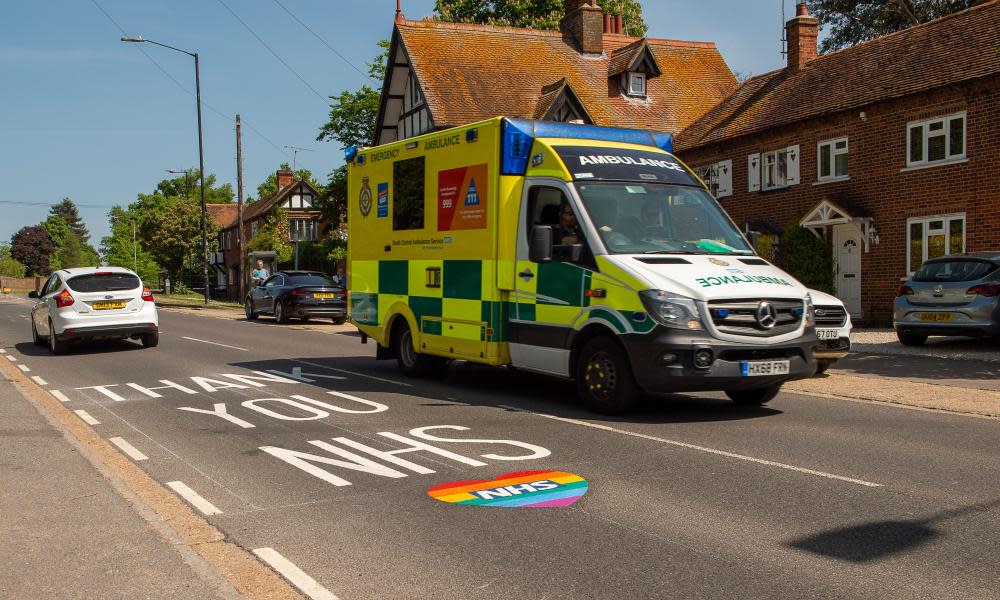Coronavirus death toll in England revised down by more than 5,000

The coronavirus death toll in England is to be revised down by more than 5,000 following concerns that more than one in 10 fatalities should not have been included in the official figure.
The government announced a new UK-wide standard for how it records the official toll on Wednesday after it came to light that thousands of people in England who may have recovered from the virus before they died were still counted in the headline number.
The changes means 5,377 deaths will no longer be included in the official total from Public Health England, resulting in a decrease in the UK total from 46,706 to 41,329 – a reduction of 11.5%.
From now on the official government death toll will only include people who died within 28 days of testing positive for the virus, a change that brings England into line with other parts of the UK. Previously deaths in England were included for anyone who had died following a positive coronavirus test at any point.
The government’s analysis of the data found 96% of deaths occurred within 60 days or had Covid-19 on the death certificate, while 88% of deaths occurred within 28 days of a positive test.
Daily death toll announcements were suspended in mid-July after the health secretary, Matt Hancock, announced a review of the deaths included in the government’s figure.
At the time, Hancock claimed the Public Health England figures were overstating the Covid-19 death toll.
There is a discrepancy between the Office for National Statistics (ONS) figures, which counts fatalities where Covid-19 is mentioned on the death certificate and include deaths in all settings, and the PHE data, which covers deaths in hospitals or those linked to a positive Covid test.
The official PHE figures are still likely to be a significant undercount of the true death toll. Coronavirus deaths registered by the ONS are almost a third higher than the government figure.
The new PHE figures, which cover the period to 12 August, report the death toll as 36,695 for England, while the ONS reported 49,183 that occurred by 31 July 2020 but were registered by 8 August.
However, due to differences in how deaths are counted, experts have cautioned against relying solely on Covid-19 death statistics. Excess deaths, which compares the number of deaths in a given week with the five-year average, are widely understood to be the “gold standard” in measuring the impact of coronavirus.
The UK has one of the highest excess death tolls in Europe. The total number of excess deaths exceeded 65,000 across the UK between the first coronavirus deaths being recorded in mid-March and late June.
Prof David Spiegelhalter at Cambridge University’s Statistical Laboratory said: “This is a complex area and there is no truly ‘correct’ count … My real concern is with communication to the media and the public.
“PHE have been consistently poor in clarifying both who is included as a Covid death and the inevitable delays in reporting, and their dashboard has given the strong impression that the daily count is the actual number of deaths the day before.
“This in turn has influenced how the number is reported by the media, and is deeply misleading at this stage of the epidemic, when the reported and the actual daily counts can be very different. I desperately hope that PHE can do more to prevent misinterpretation, but they have got themselves into a difficult situation in adding even more complexity to the multiplicity of Covid death statistics.”
Keith Neal, an emeritus professor in the epidemiology of infectious diseases at the University of Nottingham, said the measures were sensible and brought England into line with the rest of the UK.
“The previous measure of always being a Covid-19 death even if recovered was unscientific. As Covid-19 deaths fall the number of recovered patients, particularly the very old and those with severe underlying conditions are now dying from these conditions and not Covid-19.
“These non Covid-19 deaths in survivors would become an ever increasing percentage of the England Covid-19 deaths being reported. It had become essentially useless for epidemiological monitoring.”


